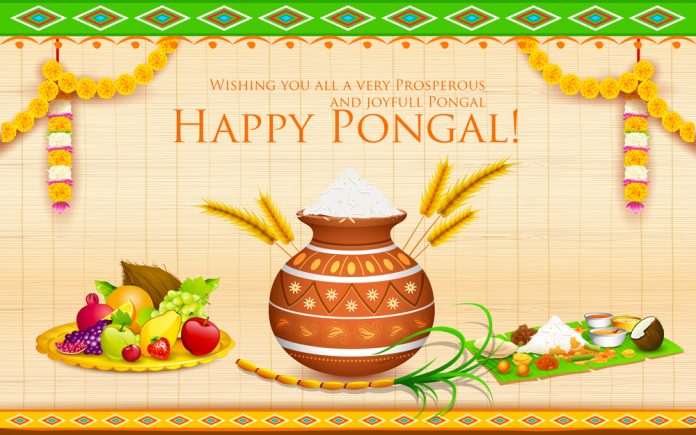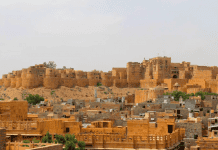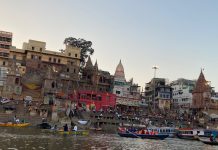
As soon as the New Year dawns, the people of Tamil Nadu get ready for their annual celebration of Pongal – a great harvest festival, celebrated by one and all. Pongal is the first day of the month of Sankaranti, on the Makar Sankaranti day that falls on January 14th every year. It is celebrated for three days. Pongal, as the name implies, goes into preparing the main sweet dish of the day – PONGAL (rice, mung dal, and jaggery).
On the day before Pongal is ‘Bhogi Pandigai’ when a huge kolam or rangoli is drawn in the courtyard of the house. The white rangoli has a red border, called ‘kaavi’, which adds to its aesthetic beauty. On the Bhogi night, the household gets ready for Pongal. Rice is ground to a fine wet paste to be used for creating rangoli designs on the threshold of the house and the kitchen platform, too, is decorated with kolam. It is nice to find out that these traditions are being followed even today. Puja mandap and work counter are designed with rangoli, torans made of fresh mango leaves are hung over the door of the house. A brass pot is used to cook pongal (sweet and savoury rice preparations) with a coating of rice dough applied on it that is peppered with vermillion (kumkum). Then the neck of the pot is adorned with fresh turmeric roots and fresh flowers.
Another must for Pongal puja is a pair of tall sugarcanes with its crown of leaves, haldi plant with leaves and ginger plant with its roots, fresh flowers and ripe yellow bananas. Rice, milk and water are poured into the Pongal Paanai as it is called after decoration. There are two kinds of pongal rice. Venn Pongal is the savoury form and Shakarai Pongal is prepared with jaggery.
When milk and water boil and rise to the brim, foaming, all the members of the family assemble to see the overflowing water, and shout ‘Pongal-o-pongal’. If the foam overflows, it is considered to be auspicious and signifies that the year to follow will be prosperous. As the pongal cooks, prayers are offered to Lord Surya, the Sun God, for blessings. In some houses, it is a custom to collect the foaming liquid and sprinkle it around the house, hoping to bring peace, wealth and happiness. The vegetables prescribed for the day are yellow pumpkin, green raw bananas and sweet potato.
A little pongal is left in the pot for the next day which is observed as ‘Kanu Pandigai’, celebrated by the women of the family. Early in the morning, the senior women in the house apply turmeric from fresh turmeric rhizome used for pongal puja, on the forehead of the younger married women, praying for their long, happy married life. Rice balls are made and offered on banana leaves to crows. On the day of Kanu, the menu strictly adhered to is: shakarai pongal, lemon rice/tamarind rice called ellimchai sadam/puliyodarai, coconut rice, curd rice and pappadam/chips for accompaniment. With this, the three-day festival concludes on a happy note!


















